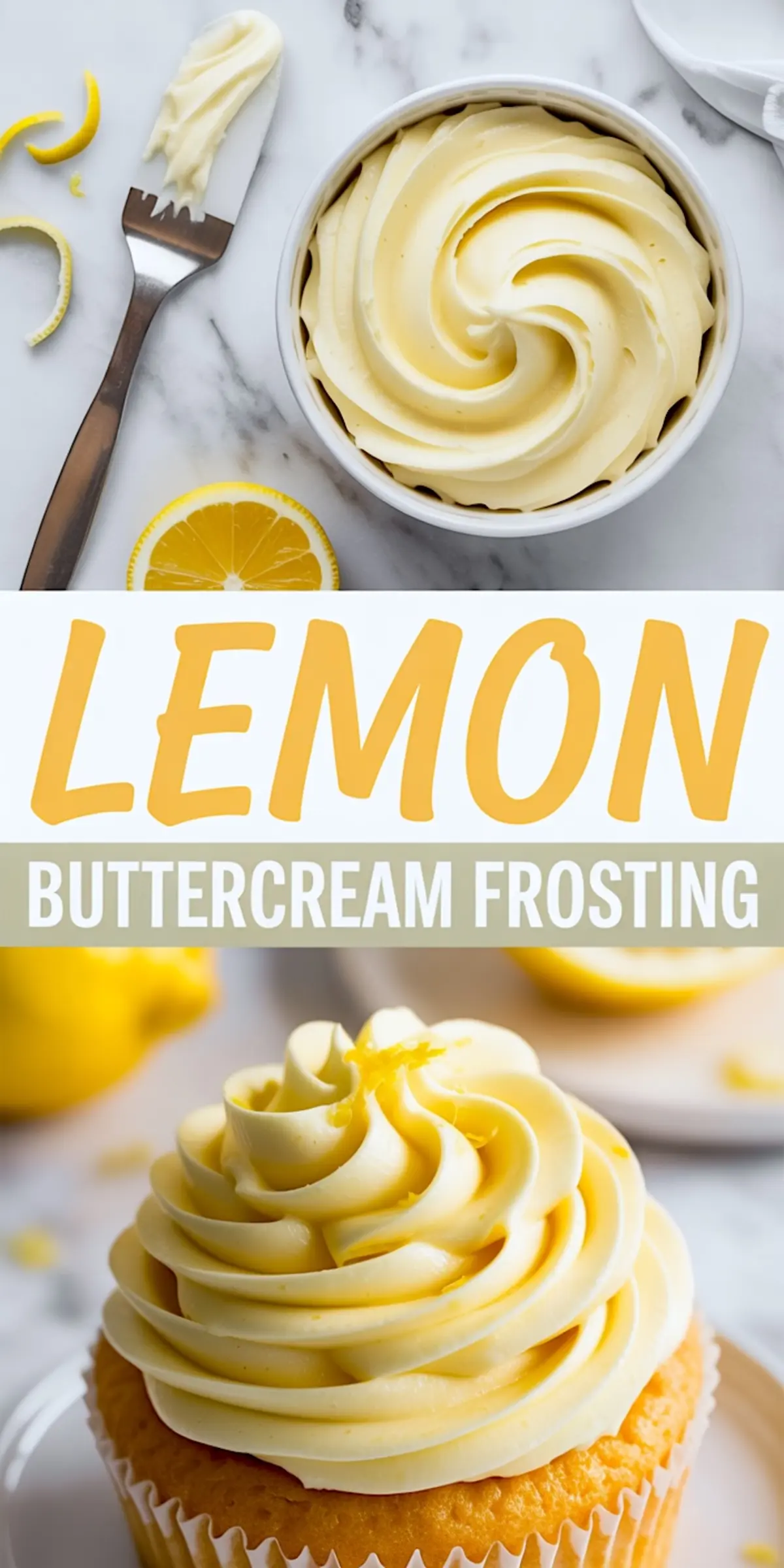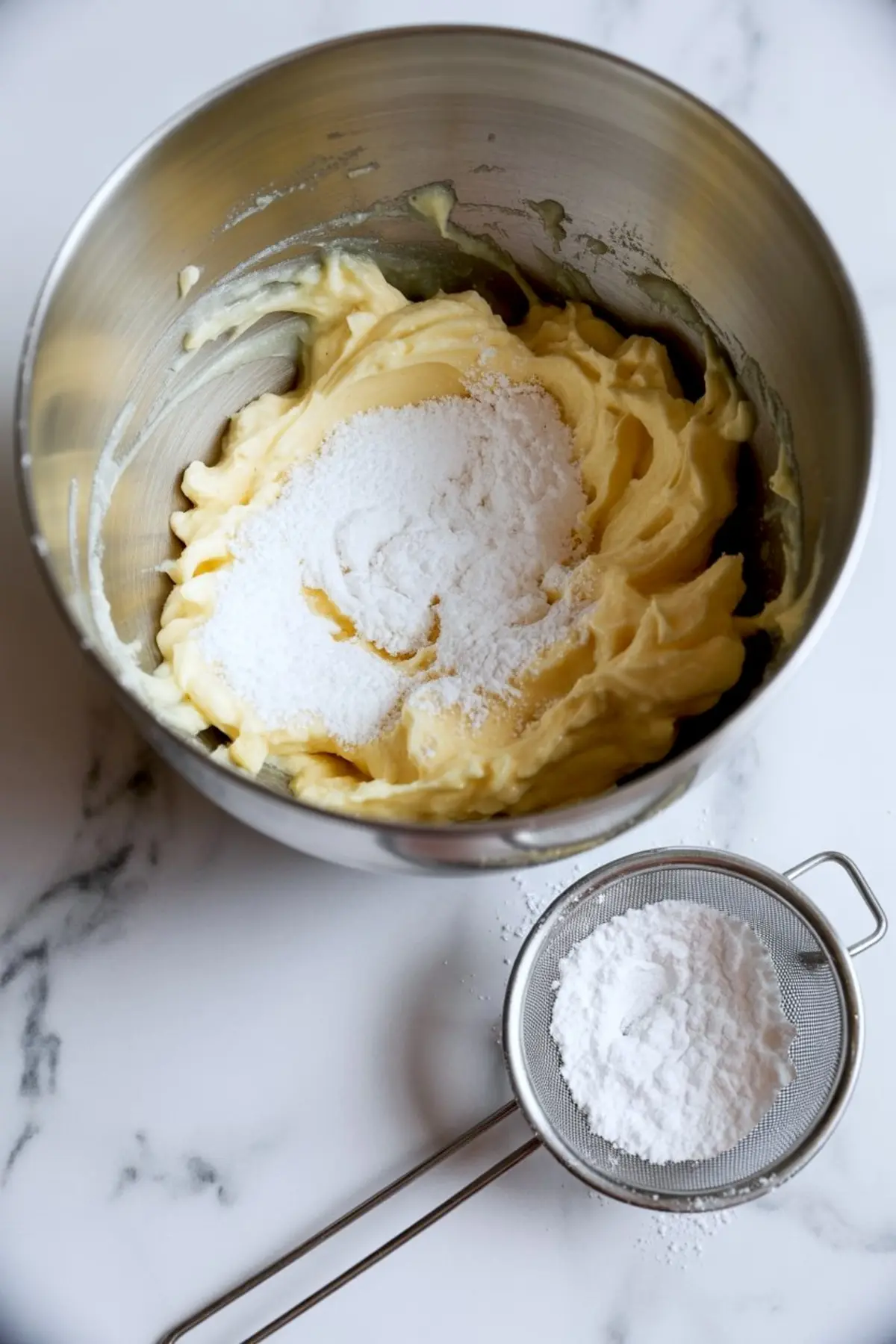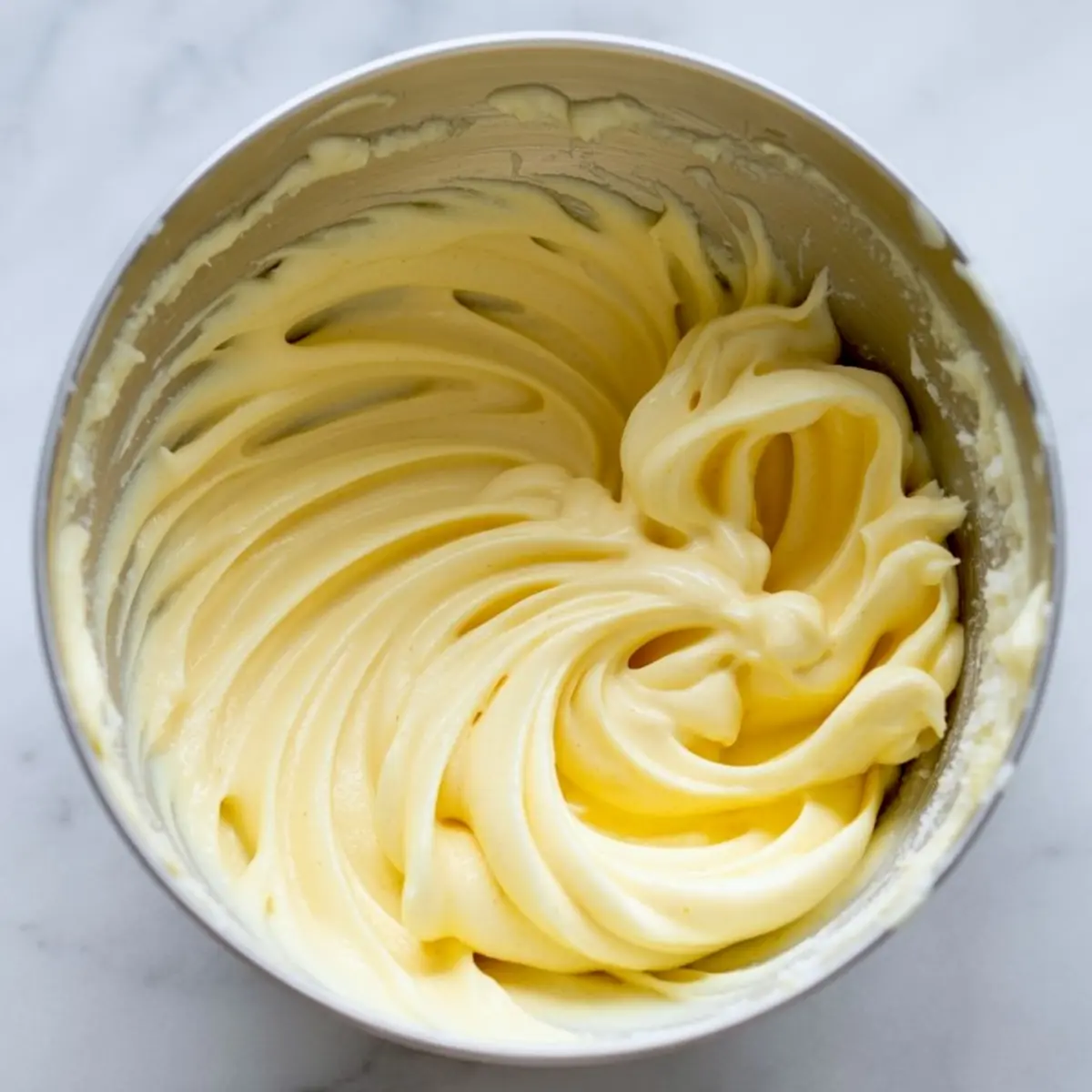Lemon buttercream frosting doesn’t whisper. It sings.
If you’ve ever tasted a frosting that felt like sunshine in a bowl, it probably started with real lemon juice and fresh zest. That’s exactly what you’ll get here. This lemon buttercream frosting recipe uses everyday ingredients to create something balanced, bright, and deeply satisfying. You’ll learn how to get that soft, pipeable texture without sacrificing structure. And you’ll understand why the right ratio of citrus to sugar matters more than most recipes admit.
You won’t just frost a cake. You’ll finish it with confidence.
This lemon butter cream frosting holds its shape for piping, spreads easily for smooth layers, and doesn’t melt into a puddle at room temp. It’s been tested on cupcakes, layer cakes, and cookies. Each time, it came through with flavor that’s sharp enough to stand out, but sweet enough to please.

Why I Don’t Skip the Zest
I’ve made this frosting with and without the lemon zest. The difference is striking.
Zest brings depth that lemon juice alone can’t match. It carries essential oils from the peel and gives the frosting a richer citrus backbone. I use the zest of one to two lemons depending on their size. You’ll feel the brightness build with every beat of the mixer.
Lemon juice thins the frosting just enough to make it fluffy. But zest is what keeps the lemon flavor intact even when the frosting rests overnight.
Choosing Butter Wisely Changes Everything

This is where I’ll pause. Butter matters more than people give it credit for.
I always start with unsalted butter at room temperature. You need it soft enough to whip but not warm enough to collapse under sugar. I’ve tried high-end European butters and standard supermarket bricks. For this frosting, regular unsalted butter gives the best balance. European varieties with higher fat content can make the frosting too soft once the lemon juice hits it.

Use what you trust. But make sure it’s fresh. Rancid butter ruins citrus.
Here’s where I add a pinch of salt to pull it together. Don’t skip it.
Powdered Sugar Isn’t Just a Sweetener

This frosting uses a full 3 ½ cups of powdered sugar. That’s intentional.
You’ll need it to stabilize the lemon juice and create that signature smooth, pipeable texture. I always sift mine before mixing to avoid lumps and get a finer finish. Even if your sugar looks fine, a quick sift makes the final texture noticeably smoother.

Powdered sugar also gives the frosting structure without weight. That matters more than you’d think on warm days or tall cakes.
Buttercream vs Cream Cheese: A Practical Test

In my notes, I once compared this lemon buttercream frosting with a lemon cream cheese version.
Both delivered strong citrus flavor, but the cream cheese batch softened too quickly on cupcakes set out for a summer event. It slouched after an hour.
Buttercream held its shape through the afternoon.
If you’re frosting a lemon cake for a gathering, especially one outdoors, buttercream is the safer choice. You’ll keep the height, the swirls, and the lemon flavor intact.
The Role of Heavy Cream (And When to Skip It)
The final texture depends on small tweaks.
Once the sugar and citrus are in, I add a splash of heavy cream. Just one tablespoon at first. I stop and test. If the frosting is still stiff, I’ll add another. Milk works too, but heavy cream gives a silkier finish. It’s easier to pipe and feels richer on the tongue.
If you’re spreading the frosting instead of piping it, milk alone may be enough.
Vanilla Doesn’t Steal the Show. It Grounds It.
One teaspoon of pure vanilla extract goes into the bowl near the end.
It might seem small, but it adds warmth that rounds out the lemon. Without it, the citrus can feel sharp and incomplete. Think of vanilla here as the base note. It supports the lemon without dulling it.
Color Isn’t Flavor, But Sometimes It Helps
Some days I leave the frosting pale.
Other times I’ll add one drop of yellow gel food coloring. Not for taste. Just to visually hint at what’s inside. Especially if I’m piping the frosting on white cupcakes or layering it between pale cake, a soft yellow makes the lemon come forward even before the first bite.
One drop is enough. Don’t overdo it. This isn’t a school bus. It’s buttercream.
Pairing Tips: What This Frosting Loves
This lemon cake frosting shines with simple vanilla sponge, berry cakes, or lemon curd layers.
I’ve piped it on cupcakes like these Lemon Buttercream Cupcakes Recipe and found it held swirls beautifully even after chilling.
It also pairs nicely with cookies, especially shortbread.
If you’re looking for variety, try alternating this with my Vanilla Buttercream Frosting for striped effects or contrast.
Serving and Storage That Keeps It Easy
You can make this frosting up to two days ahead.
Store it in an airtight container in the fridge, then bring it to room temperature and re-whip before using. It holds flavor well and doesn’t separate unless over-mixed.
I recommend serving it at room temperature. The lemon flavor comes through more clearly and the texture feels softer without slipping.
If You’re Trying Other Flavors
This recipe is adaptable. I’ve made it with orange zest in place of lemon for a softer citrus feel.
You can also swap in strawberry or chocolate frostings depending on your dessert. For those, see my Strawberry Buttercream Frosting or Chocolate Buttercream Frosting.
Each brings a different texture, but the method is similar.
Save and Share This Bright Buttercream

If this lemon frosting recipe helped you finish your cake with confidence, save it to your frosting board for easy access later.
I’d love to hear what you used it on. Did you try it on cookies, cupcakes, or something else entirely? Share your thoughts or questions in the comments so others can learn from your experience.
Lemon Buttercream Frosting Recipe

Lemon buttercream frosting recipe brings a bright, tangy finish to any cake or cupcake. I beat softened butter until light, then mix in powdered sugar, fresh lemon juice, and zest for flavor that balances sweet and sharp. The texture is smooth and easy to spread, with just enough lemon punch to lift a plain vanilla or complement a lemon cake frosting. This one pairs beautifully with white cake, berry layers, or even cookies. I use it often for summer bakes, and it holds up well at room temp. If you’re looking for lemon frosting recipes with simple ingredients and big payoff, this is the one. It’s quick to make, pipeable, and hits all the right notes.
Ingredients
- 1 cup (226g) unsalted butter, softened to room temperature
- 3 ½ cups (420g) powdered sugar, sifted
- 2 tablespoons fresh lemon juice
- 1 tablespoon lemon zest (from 1–2 lemons)
- 1 teaspoon pure vanilla extract
- Pinch of salt
- 1–2 tablespoons heavy cream or milk, as needed for consistency
- 1 drop yellow gel food coloring (optional)
Instructions
- WHIP THE BUTTER: In a stand mixer fitted with a paddle attachment or using a hand mixer, beat the softened butter on medium-high speed for 3–4 minutes until the texture is light, creamy, and fluffy.
- ADD LEMON ZEST AND JUICE: Scrape down the sides of the bowl, then add the lemon zest and lemon juice. Beat for 30 seconds to fully incorporate the citrus flavor into the butter.
- ADD POWDERED SUGAR GRADUALLY: Reduce the mixer speed to low and add the powdered sugar slowly, about 1 cup at a time. Once all the sugar is added, increase to medium-high speed and beat for 2–3 minutes until the frosting is fluffy and smooth.
- ADD VANILLA, SALT, AND CREAM: Mix in the vanilla extract, a pinch of salt, and 1 tablespoon of cream or milk. Beat for 1–2 minutes, then check the texture. If the frosting is too thick, add another tablespoon of cream and mix until desired consistency is reached.
- OPTIONAL—ADD COLOR: If a more vibrant yellow appearance is desired, add a drop of yellow gel food coloring and mix until the color is evenly distributed.
Notes
Frosting can be made up to 2 days ahead and stored in an airtight container in the refrigerator. Bring to room temperature and re-whip before using for best texture.

